
It’s no surprise that working from home has become increasingly common in the last few years. In many industries, people routinely stay home an average of a day each week, and that’s in addition to routinely doing work at home before or after the regular business day. If that sounds like you, it might be time to build out a more cohesive home office. Whether you’re planning to get a full PC or just continue to use your laptop, it might be a good idea to get a dedicated computer monitor. In addition, if you are planning to start editing photos you’ve taken on a new DSLR camera or exploring the idea of streaming your own content online, a new monitor might be in order as well.
To help you choose a monitor for your home office, I’ve rounded up 11 of the best monitors available, and make some specific recommendations for which one you might want to buy.
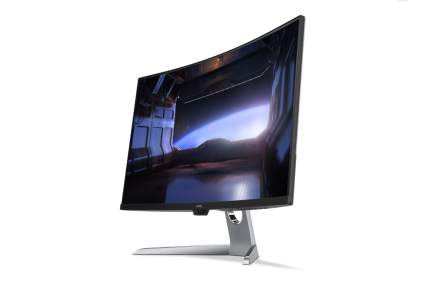
|
Amazon Customer Reviews
|
Price: $269.99 Shop at Amazon | Shop now Read our review |
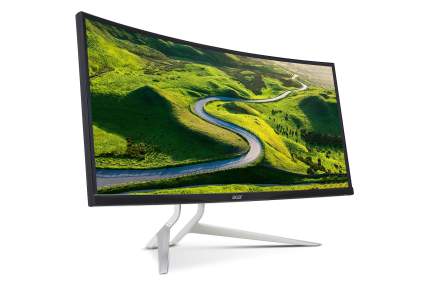
|
Amazon Customer Reviews
|
Price: $649.99 Shop at Amazon | Shop now Read our review |
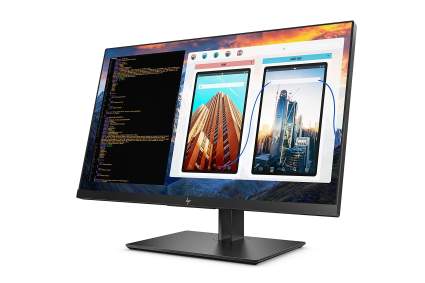
|
Amazon Customer Reviews
|
Price: $659.00 Shop at Amazon | Shop now Read our review |
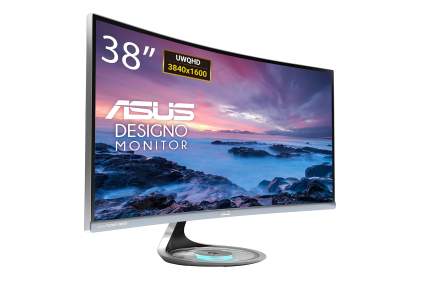
|
Amazon Customer Reviews
|
Price: $1,350.00 Shop at Amazon | Shop now Read our review |
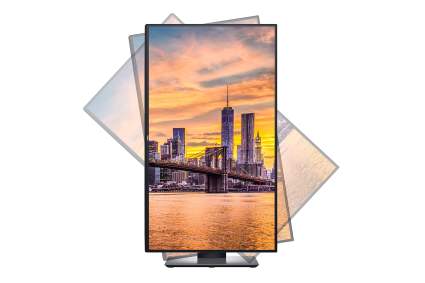
|
Amazon Customer Reviews
|
Price: $799.99 Shop at Amazon | Shop now Read our review |
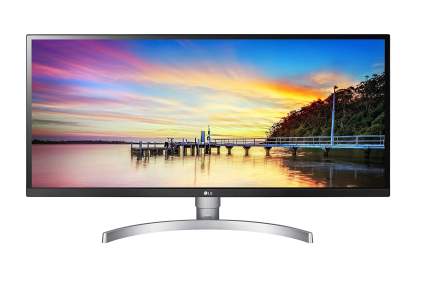
|
Amazon Customer Reviews
|
Price: $199.99 Shop at Amazon | Shop now Read our review |
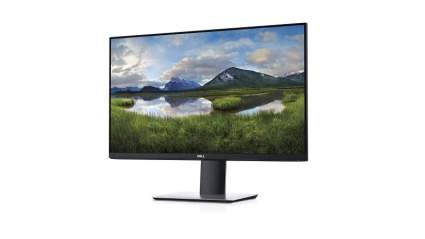
|
Amazon Customer Reviews
|
Price: $343.00 Shop at Amazon | Shop now Read our review |

|
Amazon Customer Reviews
|
Price: $239.99 Shop at Amazon | Shop now Read our review |
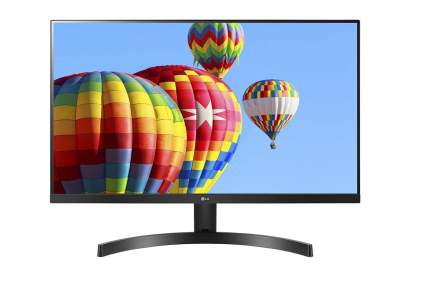
|
Amazon Customer Reviews
|
Price: $191.00 Shop at Amazon | Shop now Read our review |
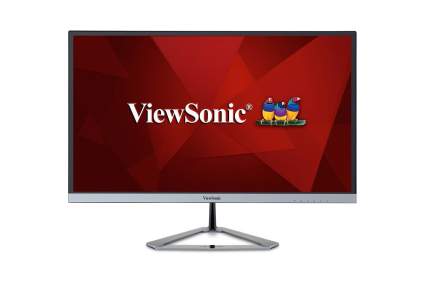
|
Amazon Customer Reviews
|
Price: $99.99 Shop at Amazon | Shop now Read our review |
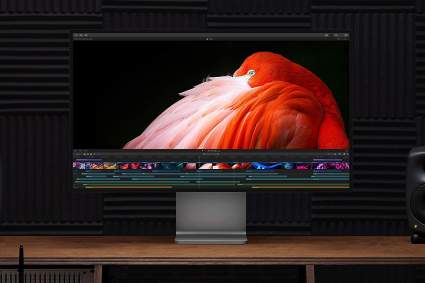
|
Amazon Customer Reviews
|
Price: $5,999.00 Shop at Amazon | Shop now Read our review |
-
1. BenQ EX3203R
Pros:- Huge 32-inch display
- Curved immersive screen
- FreeSync support
Cons:- No 4K display
- Expensive
- No speakers
Size: 32 inches | Native resolution: 2560 x 1440 | Panel type: VA | Display ports: HDMI x 2, DisplayPort, USB-C | Downstream USB: USB 3.0 x 2, USB-C
This enormous 32-inch display dwarfs more common 27-inch monitors, which until recently were about as big as was practical to put on your desk. This BenQ EX3203R is pricey, to be sure, but not stratospherically expensive, especially considering what you’re getting for the money.
This monitor is aimed squarely at gamers, but it’s a superb productivity monitor as well. Rather than IPS, it’s made with a less common VA panel that allows the monitor to have a high 144Hz refresh rate, while also offering a bright, contrasty screen with wide viewing angles, as well as integrated HDR. You get 90% of the wider DCI-P3 color gamut, and the monitor comes factory-calibrated. And BenQ includes a handful of features designed to ease eye strain, such as a nighttime low-blue-light mode like you’ll find in your phone, and a feature that adjusts brightness depending upon ambient lighting conditions.
But the most interesting part of this display is that it features a curved screen. You don’t see a lot of these anymore, but the “wraparound” feel is great — you feel enveloped by whatever you’re doing, whether it’s gaming, streaming movies, or working on productivity apps. The screen has an aggressive 1800R curvature rating, which means that if you allowed the monitor to form a complete circle, the radius would be 1.8 meters. That’s curvier than most monitors. You can vary the height and tilt of the monitor for optimal viewing.
BenQ built in FreeSync 2 support to reduce tearing an bleeding in games if you have a GPU that supports it. On the downside, though, the resolution is a middling QHD. It would have been great to see 4K worth of pixels on a screen this big.
You get a wealth of ports in the EX3203R, including a pair of HDMI and a DisplayPort, as well as two USB 3.0 and a USB-C connection. There’s also a headphone jack, though no built-in speakers.
-
2. Acer XR342CK Pbmiiqphuzx
Pros:- Giant 34 inch display
- Immersive curved screen
- Integrated speakers
Cons:- Expensive
- No downstream USB-C
- Display doesn't pivot
Size: 34 inches | Native resolution: 3440 x 1440 | Panel type: IPS | Display ports: HDMI x 2, DisplayPort, USB-C | Downstream USB: USB 3.0 x 4
While Acer aims this monitor at entertainment and gaming applications, this is an awesome choice for productivity as well.
When TV manufacturers started offering giant televisions with curved screens, no one bit. The main disadvantage? Often, the entire family sits down to watch TV together, but a curved screen can by definition only deliver the best view for whoever is sitting in the middle. You don’t see a lot of curved TVs anymore. But there’s still a strong case to be made for curved computer monitors: Only one person tends to use it at a time, and so why not make a great experience optimized for that user? The Acer XR342CK Pbmiiqphuzx adheres to this philosophy; it’s a stunning 34-inch display with a very pronounced curve. And while it has real value, it also makes you feel like you’re working on a space ship. The curvature rating is 1900R, which means that if the curve made a complete circle, the radius would be 1.9 meters.
In a sense, this monitor has something of an oddball design. It has a 21:9 aspect ratio rather than the more typical 16:9. That gives it a cinematic feel. While you’d hope for a full 4K UHD resolution on a monitor of this size, it’s just QHD, albeit in a weird 3440 x 1440 pixel ratio. It’s fine; the screen is definitely sharp. But more pixels at this size would have been welcome. On the plus side, the monitor has AMD’s FreeSync built in, which means no tearing in fast-moving video or games if you have a compatible GPS in your PC.
Asus puts the space behind this enormous display to good use with a pair of 7-watt speakers. That’s enough power to generate decent audio, and the system has Dolby DTS support as well.
HDR support and a 100% sRGB color gamut mean you can use this for photo editing and graphic design, and Acer’s VisionCare feature (which filters blue light) means you can work late at night without fatigue. But it’s definitely one of the more pricey monitors you’ll encounter. And honestly, if you’re not going to just add a portable monitor to your home setup, perhaps you should think big and consider an enormous, curved screen.
Need a new laptop to accompany this display? Consider upgrading to a new Ryzen 4000 Series laptop.
Find more Acer XR342CK Pbmiiqphuzx information and reviews here.
-
3. HP Z27
Pros:- 4K resolution
- Pivots bewtween landscape and portrait
- USB-C with Power Delivery
Cons:- No HDR
- No FreeSync
- No speakers
Size: 27 inches | Native resolution: 3840 x 2160 | Panel type: IPS | Display ports: HDMI, DisplayPort, mini DisplayPort, USB-C | Downstream USB: USB 3.0 x 3, USB-C
It’s not hard to imagine that the HP Business Z27 is what most average monitors will look like in a year or two; HP just happens to be ahead of the curve in getting there. It’s a generously large 27-inch monitor with full 4K UHD resolution. The panel is, not surprisingly, IPS, since that’s a good compromise in quality, brightness, viewing angle, and response time for most users, even if it’s not ideal for gamers. With 4K panels dropping in price, it’s just a matter of time before QHD and FHD displays disappear entirely for monitors over 24 inches.
Visually, HP plays the Z27 like a fairly mundane office monitor; the bezel is pretty thin around the top and sides, but otherwise, it’s unremarkable. The stand lets the monitor tilt, swivel, and pivot between portrait and landscape orientation. And the monitor is chock full of ports. You can connect devices using HDMI, DisplayPort, mini DisplayPort, or even USB-C, and the monitor can connect accessories via a trio of USB 3.0 and a USB-C port. The USB-C port, in fact, is fully Power Delivery compatible, delivering up to 65 Watts of power.
What won’t you find under the hood of this monitor? HDR, for starters, as well as any kind of GPU sync feature like FreeSync. And there are no speakers, though there is a headphone jack if you want to plug in for audio.
-
4. ASUS Designo Curve MX38VC
Pros:- Enormous 37.5-inch display
- Built-in Qi chraging
- Speakers with Bluetooth streaming
Cons:- Standard color gamut and no HDR
- Very expensive
- Not a 4K display
Size: 37.5 inches | Native resolution: 3840 x 1600 | Panel type: IPS | Display ports: HDMI x 2, DisplayPort, USB-C | Downstream USB: USB 3.0 x 2
If price is no object, the ASUS Designo Curve MX38VC is the high-end monitor that wants to sit on your home office desk. A massive 37.5 inches wide and packed with a QHD resolution (3840 x 1600 pixels), it’s one of the most impressive displays you’re going to find at any price point. And therein lies the problem — priced around $1000, it really does break the bank for most folks.
This monitor has a lot to offer, though. It’s a curved display, with a gentle 2300R rating (the curve is much less aggressive than similar monitors which have a rounder 1500R curve). And the nearly-38-inch screen gives you about 20% more screen estate than you’ll find in even a 34-inch monitor. It’s built from an IPS panel with TÜV Rheinland-certified ASUS Flicker-free technology, which is designed to reduce eyestrain during long hours of working in front of the monitor. What won’t you find here? Features like an extra-wide color gamut or HDR. This is a pretty standard monitor when it comes to display performance.
The monitor has dual HDMI ports, a DisplayPort and USB-C input, along with a pair of USB 3.0 connectors with fast charging for accessories. Perhaps the coolest feature, though, is a standard Qi wireless charging pad built into the monitor stand. Just put your Qi-compatible device (like an iPhone or Samsung Galaxy phone) on the stand to charge it automatically. And while finding integrated speakers in a monitor is a bit hoit-or-miss, ASUS goes above and beyond by including 10-watt Harman Kardon, and built-in Bluetooth support, so you can stream music from your phone through the monitor’s speakers.
If you need to mount this display, be sure to check out the best multi-monitor stands for your desk or workspace.
Find more ASUS Designo Curve MX38VC information and reviews here.
-
5. Dell UltraSharp U2720Q
Pros:- 4K resolution
- Pivots lanscape or portrait
- Multiple USB ports including USB-C
Cons:- A little pricey
- Not optimized for gaming
- No speakers
Size: 27 inches | Native resolution: 3840 x 2160 | Panel type: IPS | Display ports: HDMI, DisplayPort | Downstream USB: USB 2.0 x 2, USB 3.0, USB-C
Looking for a gorgeous display that leans more towards creative work like photography and graphic design than spreadsheets? Then the Dell UltraSharp U2720Q should be high on your list for consideration. The name is well deserved — despite the large 27-inch display, the pixels are packed tightly thanks to the full 4K UHD resolution. The screen offers a somewhat wider color gamut than you’ll find in typical desktop monitors — it boasts 95% DCI-P3 gamut, which is about 25% wider than sRGB. It also comes factory calibrated.
The display also pivots to portrait or landscape orientation, which is super handy for certain kinds of work — if you’ve never tried writing with Microsoft Word on a monitor that’s been pivoted to a vertical orientation for example, you have no idea what you’re missing.
This monitor really isn’t a do-everything display, though. The IPS panel is a little too sluggish for games, and it lacks an active synchronization feature like ActiveSync to keep fast-moving games from tearing and bleeding.
But if you’re not a gamer, there’s a lot here to recommend the monitor. In addition to the resolution, size, and color, it has Dell’s Display Manager software for tiling and managing windows so you can make better use of the screen estate. It even works across multiple monitors, if you’ve connected them. A thin bezel gives the monitor a sleek look, and there is a solid array of ports, including three standard USB connectors and a USB-C port. The USB-C port is fully Power Delivery-compatible, so it can charge power-hungry devices quickly and efficiently.
Find more Dell UltraSharp U2720Q information and reviews here.
-
6. LG 34WK650-W
Pros:- Large 34-inch display
- Immersive, ultra-wide screen
- ActiveSync for gaming
Cons:- Resolution is a little low for this size display
- No USB ports
- Too large to work in portrait mode
Size: 34 inches | Native resolution: 2560 x 1080 | Panel type: IPS | Display ports: HDMI x 2, DisplayPort | Downstream USB: None
If you’re working from home at least part of the time and looking to beef up your office, you might have fantasies about luxuriating in front of a huge,. fancy monitor. Few kinds of displays are sexier than an ultra-wide, which is great for multitasking multiple apps and windows at once during the day and for super-immersive gaming at night. You can get dip your toes into an ultra-wide monitor without breaking the bank with the affordable LG 34WK650-W.
The LG 34WK650-W is a respectable 34 inches wide, with an aspect ratio of 21:9 (compared to the more typical 16:9 aspect ratio found in most displays). LG built this display on an IPS panel and incorporated HDR color and a wide color gamut (99% sRGB), which makes this a good choice for anyone who needs to depend upon image fidelity for their work. It also includes AMD FreeSync, which eliminates tearing video if you have a compatible GPU. On the other hand, this monitor has significantly fewer pixels than you’d expect to find in such a large display — it has a resolution of 2560 x 1080. That’s disappointing, but don’t discount this monitor out of hand — it’s still a very respectable pixel density and should look good in day-to-day use.
Nonetheless, LG includes a split-screen control to more easily arrange windows and apps on the large display, which is convenient, and the display itself tilts and is height adjustable to help you get the perfect viewing angle. It even has a pair of speakers — at 5 watts each, they can do a decent job at low-to-moderate volume.
-
7. Dell P2720D
Pros:- Very large 27-inch display
- Quad HD resolution
- 4 downstream USB ports
Cons:- IPS panel not ideal forn gaming
- No USB-C port
- No speakers
Size: 27 inches | Native resolution: 2560 x 1440 | Panel type: IPS | Display ports: HDMI, DisplayPort, USB 3.0 | Downstream USB: USB 2.0 x 2, USB 3.0 x 2
Many of us have fairly modest needs for a home office computer monitor, making this a great all-round option. If you need an inexpensive monitor with decent resolution and color accuracy — but you’re not planning to play a lot of games, or need 4K resolution, then the Dell P2720D is a solid choice. The 27-inch display is, frankly, enormous, and the QHD (Quad HD) resolution of 2560 X 1440 pixels is about as high as you can go before hitting true 4K (which frankly, most people probably do not need). The monitor’s IPS panel delivers good color accuracy and contrast, making it a solid performer for most desktop applications — but it’s not optimal for gaming, because it does have noticeable lag and tearing.
The Dell P2720D also features a generous array of ports. Of course, it connects via HDMI, which is how most people will connect it to a PC or laptop, but it also includes a DisplayPort and USB 3.0. Downstream — for connecting and powering your PC peripherals — the monitor has a pair of USB 2.0 ports on the bottom and a pair of USB 3.0 ports on the side. That’s a lot of USB ports. One port this monitor conspicuously lacks, though, is USB-C.
The monitor can tilt, swivel, and pivot with a fair bit of flexibility so you can position it in the most comfortable way for your desk and seating arrangement.
-
8. ASUS VS239H-P
Pros:- Inexpensive
- Solid and reliable
- HDMI port
Cons:- Only FHD resolution
- No speakers
- No USB ports
Size: 24 inches | Native resolution: 1920×1080 | Panel type: IPS | Display ports: HDMI, D-Sub, DVI-D | Downstream USB: None
A great monitors does not need to be expensive, and here’s the proof. Sure, it’s awesome to have a 32-inch display pumping out a full 4K resolution. At the end of the work-at-home day, you can stay in your seat and watch a movie or play a game on a display like that, and it’s like you’ve got the front row at a premium theater. But if all you need is to get work done — and on a budget — then consider the ASUS VS239H-P. This modest 23-inch monitor leans hard into doing the essentials, and little more.
The monitor is built from an IPS panel with an FHD native resolution — 1920×1080 pixels. It’s not a factory-calibrated display, but it is more than accurate enough right out of the box for standard productivity applications. The contrast ratio isn’t awesome, so you won’t really want to watch a lot of movies or play games on this monitor. And it lacks extras; like a throwback to an earlier age, it has HDMI, D-Sub, and DVI-D inputs, but no USB ports of any kind.
The bottom line: This is a monitor that will save you a lot of money when building out a home office, but it’s going to give you a lot of fun time after the work day is over.
-
9. LG 27MK600M-B
Pros:- Large 27-inch display
- Nearly invisible bezel
- FreeSync support
- Split screen capability
Cons:- Only FHD resolution
- No USB ports
- No speakers
Size: 27 inches | Native resolution: 1980 x 1080 | Panel type: IPS | Display ports: HDMI x 2 | Downstream USB: None
A large, affordable option that is ideal for those who don’t require the highest possible resolution. Some monitors try to do a little bit of everything, and LG’s 27MK600M-B falls into that camp, managing to offer a surprising number of features at an affordable price — by also making some tactical compromises along the way. Yes, it’s an expansive 27-inch display that’ll take up most of an average-sized desk. Unfortunately, LG squanders that screen estate with an FHD resolution of 1980 x 1080 — it’s not bad, but a screen this size really demands to be filled with a QHD display at least. Of course, the FHD panel is what helps to make this monitor so affordable. So, tradeoffs.
The monitor features an IPS panel which LG says is color calibrated, and that’s a good thing not just for ordinary productivity work, but its especially handy if you do creative work (like photo editing or graphic design) at home. The monitor itself is also quite attractive — LF has designed this monitor with minimal bezeling. The bezel is most noticeable at the bottom; around the other three sides, it’s virtually invisible.
While IPS panels are generally not ideal for gaming thanks to sluggish pixel response, the 27MK600M-B supports Radeon FreeSync, which all but eliminates tearing and stuttering that happens as a result of the mismatch between the GPU’s frame rate and the monitor’s refresh rate. That makes this monitor an excellent choice if you play a lot of fast action games.
The 27MK600M-B also has a “reader mode,” which reduces blue light output for less eye strain when working in the evening, not unlike the way your smartphone works. And perhaps most interestingly, the monitor’s on-screen controls include a split-screen tool that you can use to divide the screen into multitasking zones as if you had multiple monitors connected.
-
10. ViewSonic VX2276-SMHD
Pros:- Very affordable
- Variety of sizes from 22-27 inches
- VGA input for older devices
Cons:- No USB ports
- No speakers
- Not ideal for gaming
Size: 22 inches | Native resolution: 1920 x 1080 | Panel type: IPS | Display ports: HDMI, DisplayPort, VGA | Downstream USB: None
ViewSonic’s VX2276-SMHD is a good choice for cramped home workspaces, where you might not be able to make room for a 27-inch display. But depending upon your desktop, ViewSonic offers this model in a variety of sizes — including this 22-inch version,m as well as 23 inches, 24 inches and 27 inches.
This is a pretty straightforward design. ViewSonic packs the 22-inch display with an FHD resolution of 1920 x 1080 pixels, which looks quite sharp at this size. The IPS panel offers good brightness and viewing angles, but like all IPS monitors, it may not be the best choice for gaming. But if you have older hardware you need to connect to a monitor, ViewSonic has your back. This monitor has the usual HDMI and DisplayPort connections, but a VGA port as well. This is one of the few monitors still around that can accommodate VGA. On the downside, there are no downstream USB connections.
And like a handful of other modern monitors, the VX2276-SMHD has a blue light filter mode, accessed from the on-screen controls, to reduce eye strain (especially when working late at night). The bottom line: This is a very inexpensive monitor that does all the essentials, and can be a great choice to round out a home office on a budget.
Find more ViewSonic VX2276-SMHD information and reviews here.
-
11. Apple Pro Display XDR
Pros:- Stunning 6K resolution
- Unequalled brightness and color
- Great aesthetics
Cons:- Heart-stoppingly expensive
- No power button or controls
- No HDMI
Size: 32 inches | Native resolution: 6016 x 3384 | Panel type: IPS | Display ports: USB-C Thunderbolt | Downstream USB: USB-C x 3
Apple’s Pro Display XDR is a display like no other. Designed expressly for Apple users looking for aa high-end display, it’s priced in the stratosphere, yet paradoxically, it’s a steal for what you’re really getting. If you have a genuine need for the super-high-caliber graphics it’s capable of rendering.
So let’s get this out of the way right up front: Unless you’re a photographer, graphic designer, or video post-production editor, there’s little reason for you to spend something in the neighborhood of $6000 on this monitor (and don’t forget the $1000 for the stand).
But if you are one of those people, then this monitor may belong on your home office desk. Most of the time I don’t generally talk much about nits — a measure of the intensity of light output by the monitor per a given area — because the nits rating of most computer monitors doesn’t vary substantially from one display to another, even when comparing budget and premium models. Expect to see something like 300 nits from most displays. The Pro Display XDR? 1600 (peak) nits. It’s also a 6K monitor with a resolution of 6016 x 3384 pixels packed into the 32 inches of screen estate. It also has HDR thanks to a very wide color gamut, and a generous range of viewing angles. It looks so good that you’ll want to be wearing noise-cancelling headphones when you use them to eliminate distractions and concentrate on the image.
The display itself has that sort of refined, modern Apple aesthetic, which, if you care about that sort of thing, will have your neighbors visiting just so they can look at it. More practically, Apple’s single-minded emphasis on appearance causes some inconveniences. There are no controls on the monitor, for example. Even if you can live without on-screen controls, there isn’t even a power button. Want to turn it off? Pull the plug. And don’t look for HDMI or DisplayPort connections on this printer — it’s Thunderbolt all the way with the Pro Display XDR, along with a trio of additional downstream USB-C ports.
If you make an investment this large in a display, be sure that you are also using a UPS to protect your data in case of power failure.
Find more Apple Pro Display XDR information and reviews here.
How to Shop for a Home Office Monitor
There are a lot of ways to shop for a monitor; it depends upon what you find most important. You can buy a monitor based on price, size, type of display technology, or features, for example.
The right monitor can dramatically enhance your productivity, letting you see more on screen at once (which is especially important if you currently only use your laptop's modest screen), multi-task, and even see colors more accurately. There are no shortage of monitors out there, though. There are HD displays, 4K monitors, and ultra-widescreen models. They also have a lot of different hardware under the hood; the kind of panel can have a big effect on color accuracy and how well the monitor can work for fast-moving images like gaming.
If you're sensitive to price -- and honestly, few among us are not -- keep in mind that you can get a perfectly serviceable monitor for your home office for well under $200, and in fact, for as little as $100-$150. If you have a little more money to invest, then $300-$400 can buy you a high-quality, high-resolution display that will let you work for hours on end without eye strain, and possibly also be great for gaming.
Beyond about $500, you're looking at premium displays, often ones with special gimmicks, such as curved screens or ultra-wide displays, 4K (or higher), or monitors that are optimized for serious users -- hardcore gamers or video or photo professionals.
Monitors also come in various size classes -- ranging from as small as 14 inches to as big as 38 inches (measured diagonally), which obviously also influences price. But decide how large your monitor needs to be (and how much room you have to work). Anything that's 24 inches or smaller is considered pretty small by modern standards; 27 inches is a sweet spot that, because so many manufacturers cut their panels to this dimension, has become a great size to get a lot of pixels at an affordable price.
Keep in mind that if you want a lot of "screen estate" for multi-tasking or really immersing yourself in what's on-screen, there are two ways to do this. You can get a large or ultra-wide display (ultrawide monitors generally have a much more rectangular aspect ratio, like 21:9, rather than the traditional 16:9), or you can put two or more monitors side-by-side and "extend" the desktop between them. Multi-monitors are less common today than they used to be because ultra-wide displays are simpler to deal with. But multiple monitors have their advantages, including, often, that it's cheaper to buy two smaller monitors than one enormous one.
Don't forget about resolution. Surprisingly, resolution isn't as important as you might think; while more pixels is generally better, it often makes more sense to choose a larger display or other considerations over raw pixel count. That said, displays generally come in these standard resolutions (this is not a comprehensive list, but are the ones you'll see often):
FHD. Full high definition is 1920 × 1080 pixels.
QHD. Quad HD is 2560 × 1440 pixels.
4K UHD. Ultra HD is 3840 × 2160 pixels.
What You Need to Know About Monitor Panels
When monitor shopping, you'll see the display panel type mentioned a lot. The main kinds of panels you will see in monitors these days include:
Twisted nematic (TN) panels have fallen out of favor in the last few years. Yes, you'll still find TN-based monitors, especially in budget displays, and surprisingly, they remain great for handling fast-moving graphics, such as in games. But overall they generate lower quality images and have been largely replaced by IPS.
IPS, which stands for In-plane switching, is the most common technology in monitors today, because it renders a higher quality image, with better color reproduction and wider viewing angles. The major disadvantage? IPS panels are often slower than TN, which means they aren't ideal for gaming.
Vertical alignment panels are a sort of compromise between TN and IPS panels. They're not nearly as common as IPS, but they offer good color reproduction, contrast, and viewing angles. Unfortunately, they're typically even worse for speed, so are definitely a poor choice for gaming.
The Best Value in Monitors for Your Home Office
If you're looking to optimize around price -- you're looking for a cheap monitor that'll get the job done -- the ViewSonic VX2276-SMHD is probably the right place to look. It has the added advantage of coming in a variety of sizes, from 22 to 27 inches, so you can dial in the right compromise between size and price.
If you have a larger budget and are looking for the best overall display under $500, the LG 34WK650-W is what you're looking for -- it has an enormous 34-inch display, has ActiveSync if you are a gamer on your off-duty hours, and has great color and screen quality. It lacks creature comforts like USB ports, though. For a more full-featured monitor, it's hard not to love the HP Z27, which has a full 4K resolution, pivots to portrait mode, and has a USB-C port with Power Delivery for charging accessories.
Beyond the Z27, you're getting into very pricey territory, and your specific needs will determine where you spend your money. That said, a monitor like the ASUS Designo Curve MX38VC, with built-in Bluetooth speakers and Qi charging, can help your home office start to feel a bit more luxurious -- but you'll pay dearly for the privilege.
See Also:
- 11 Best Portable Monitors: Compare & Save
- 9 Best RTX 2070 Laptops: Your Buyer’s Guide
- 11 Best Wireless Gaming Headsets for PC